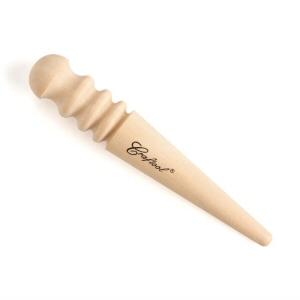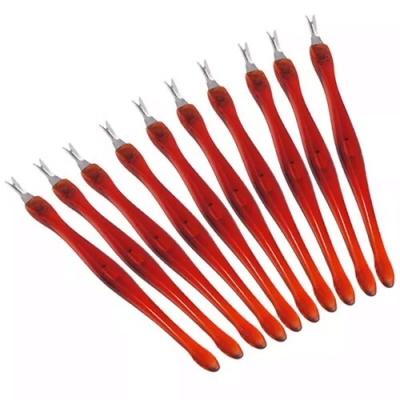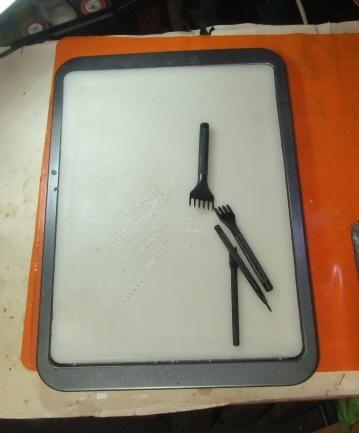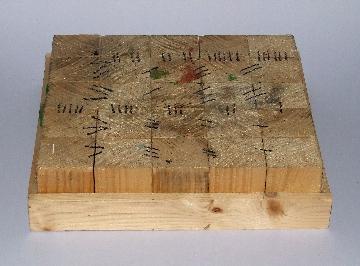-
Posts
5,932 -
Joined
Content Type
Profiles
Forums
Events
Blogs
Gallery
Everything posted by fredk
-
I don't bother sharpening the 60mm blade in my knife a. I'm rotten at sharpening b.a new blade is fairly cheap
-
end grain wood, a piece of tree log
-
I have a few key fob dies. I use a mallet and a piece of wood to cut the leather. Scrap piece of leather on top of die blade and belt the piece of wood to cut it This one cuts the stitching holes as well Two other uses for the key fob piece 1. two pieces together to make a magnetic book/page marker 2. The right shape can be used as the strap loop on shoulder bags
-
I use something similar 1. Personal preference 2. No & no
-

Edge beveled size for various leather thicknesses
fredk replied to Aventurine's topic in Leather Tools
Yup, they are also sold as 'cuticle cutters' in the beauty section of ebay. They are sold as leather working tools at about £/$5 each but as cuticle cutters they are cheaper at under £/$5 for ten. Those ones are actually £3.80 for ten -

Edge beveled size for various leather thicknesses
fredk replied to Aventurine's topic in Leather Tools
-

Edge beveled size for various leather thicknesses
fredk replied to Aventurine's topic in Leather Tools
I used to fuss about this then I wised up and use these wee edgers on all thicknesses of leather then finish the job with a carrot slicker I get them off ebay at 10 for less than £/$5 -

Alternative/traditional cutting and punching mats?
fredk replied to Aventurine's topic in Leather Tools
I mainly use a wood block. Made of short pieces end grain up. The black lines are just alignment marks so the end grain is in a different direction on each block Sometimes, on small projects I use a wax block slab- 8 replies
-
- cutting mat
- traditional materials
- (and 2 more)
-
I've never seen a slide-hammer that small. I've use very large ones, 1lb and 5 lb, on my cars When tacking heels on medieval style shoes I used a length of steel bar to reach in
- 25 replies
-
- shoe making machinery
- cobbler techniques
- (and 2 more)
-
You got what you ordered. etsy ppl do not give guarantees on their workmanship. Returning them and complaining is like shouting at the wind
-
Amazon are highly over priced for low quality. Buy what you need when you need it Put in your profile whereabouts you are and we can advice where to shop for better quality and for bargains
-

How can i sew flexible knee's and elbow joints?
fredk replied to tjjLeather's topic in Leatherwork Conversation
I don't understand your problem. If you use the correct grade of leather the elbows and knees will flex -
No it doesn't. Just means a lot of talk
-
Soak them in water for a few hours, then stretch them out, really stretch them out and let them dry and see if that improves the lay caveat emptor
-
That would make it 5 or 6 gauge, about 2.6 to 3 oz ball. That could do some serious damage
-

Any idea on how to make one of these?
fredk replied to MasonLikesLeather's topic in How Do I Do That?
I have a pattern for one much nicer than that Let me see if I can find it -
What size of ball does it take? a friend had a 3 pounder and it sent his retriever dogs crazy when he shot off a ball - they wanted to fetch the ball back but couldn't find it, it was about a mile away!
-
I have a couple of Exacto knives, and scalpels. I only use them for trimming finished items I have several heavy duty knives for cutting the leather. I wouldn't use an Exacto for that
-
I guess it be in or near the state of Georgia in the USA so shipping an order might be expensive
-
Wheresaboutye?
-
Have you tried enquiring of a ships chandler if they.have anything useful. I used to see the large headed studs used to hold tarpaulin covers down...
-
Did you know that cowboys hung lanterns from their saddles? It was the first example of saddlelight navigation.
-
An old cowboy was sitting in his favourite bar having a drink In walks a very pretty lady motorcyclist. Puts down her crash helmet and orders 3 fingers of scotch. neat The cowboy thinks, this is my sort of woman, so he goes over and asks if he could buy her a drink The woman says no, looks at him, up and down, and says 'I'm lesbian' Whats that asks the cowboy 'I work hard, I play hard, I drink hard, I ride my motorcycle fast, I make love to women, and I have no truck with men' The next day a family calls into the bar for eats. The young children are excited and run over to the old cowboy. They ask him ' Mister, are you a REAL cowboy?' The cowboy thought for a moment then says 'Until yesterday I thought so but today I think I'm a lesbian'
-
Good save We need to summon Tastech this way @Tastech








